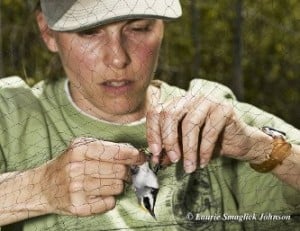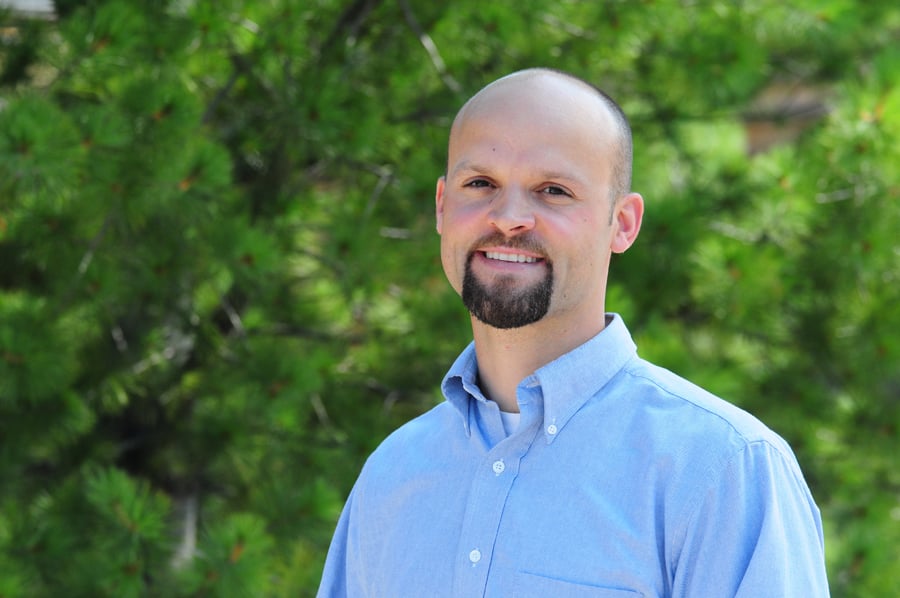 July 1, 2010—By Jennifer Donovan
July 1, 2010—By Jennifer Donovan
Most people today embrace sustainability as a good thing, and it may be the greatest technological challenge our society has ever faced.
But, in a paper just published in the journal BioScience, Michigan Technological University wildlife ecologist John A. Vucetich and Michigan State University environmental ethicist Michael Nelson say that the technological challenge of sustainability pales in comparison to the ethical crisis it presents to society.
In a paper titled “Sustainability: Virtuous or Vulgar?” Vucetich and Nelson examine the most widely-accepted definitions of sustainability, which indicate at least roughly that sustainability is: meeting human needs in a socially-just manner without depriving ecosystems of their health. While the definition sounds quite specific, it could mean anything from “exploit as much as desired without infringing on the future ability to exploit as much as desired” to “exploit as little as necessary to maintain a meaningful life,” the scientist and ethicist say.
“From a single definition arise two wildly disparate views of a sustainable world,” says Vucetich, who teaches in Michigan Tech’s School of Forest Resources and Environmental Science and leads a long-running study of the wolves and moose of Isle Royale National Park. “Handling these disparate views is the inescapable ethical crisis of sustainability.”
“The crisis results from not knowing what we mean by value-laden terms like ‘ecosystem health’ and ‘human needs.’” Nelson says, “In other words, is ecosystem health defined only by its ability to meet human needs, or does ecosystem health define the limits of human need?”
Solving the dilemma boils down to knowing the extent to which sustainability is motivated by concern for nature. Or as Vucetich puts it: “Are we concerned for nature because nature is intrinsically valuable, or only because of what nature can do for us?”
Nelson adds, “These questions are as difficult to answer as it is necessary to answer them. We are unlikely to achieve sustainability without knowing what it means.”
More disturbingly, Vucetich and Nelson point out that almost no effort is spent trying to answer this question. For example, universities have hired dozens of academics in recent years to solve sustainability problems. None of these academics work on the ethical crisis of sustainability. Likewise, the National Science Foundation’s interdisciplinary funding program for sustainability research makes no reference to ethics, and the word “ethic” appears in only one of the titles, abstracts or keywords of the 119 projects funded so far.
Vucetich and Nelson do not advance a particular interpretation of sustainability. Rather they show us why it is so important that all segments of society–academics and the general public, the public and private sectors–confront the inescapable dilemma that sustainability represents.
“The first goal ought to be a citizenry that has enough ethical knowledge to be able to just talk about these issues intelligently,” Vucetich says. Nelson goes on to say “This is unlikely to happen until social leaders, including academics from all disciplines develop for themselves enough ethical knowledge to be able to teach the broader public how to approach these questions. Then, hopefully, answers will emerge.”
They conclude, “If we attain sustainability, it will not only require critical changes in technology, but also the most profound shift in ethical thought witnessed in the last four centuries.”
The National Science Foundation provided support for the research on which this article is based.
Michigan Technological University (mtu.edu) is a leading public research university developing new technologies and preparing students to create the future for a prosperous and sustainable world. Michigan Tech offers more than 130 undergraduate and graduate degree programs in engineering; forest resources; computing; technology; business; economics; natural, physical and environmental sciences; arts; humanities; and social sciences.

Conservation could be Amber Roth’s middle name. She loves anything to do with nature. Birds, trees, grasses, ecosystems: she’s fascinated by it all.
So after tucking a BS in Conservation Biology and International Relations and an MS in Wildlife Ecology under her belt, the Green Bay, Wisconsin, native came to Tech to earn a PhD in Forest Science.
Roth researches how to manage aspen forests to produce the maximum amount of biomass per acre without harming wildlife habitat. But she was raised by a devoted bird-watcher, and a tiny songbird that is facing hard times has also captured her heart. She has become an active member of the Golden-winged Warbler Working Group, an international conservation organization that spans two continents.
Weighing only nine grams (equal to four dimes), the golden-winged warbler flies thousands of miles twice a year, migrating from its breeding grounds in the northern Midwest to its winter home in Central and South America. The tiny bird makes the long migration six to ten times in its lifetime.
“Its fuel efficiency is the equivalent of several hundred thousand miles per gallon,” Roth says with a smile.
But the far-flying warbler is in trouble. There used to be as many as half a million of the birds, and now there are fewer than two hundred thousand. “Its numbers are declining sharply, and we don’t know why. We don’t know where the patient is bleeding,” says Roth.
The Golden-winged Warbler Working Group received a small grant from the US Fish and Wildlife Service to try to determine what’s happening. Their research is a collaborative effort involving American, Canadian, and Latin American scientists.
They are spread thin. Some of the researchers are examining the bird’s, since they often crossbreed with blue-winged warblers. Only one genetically pure population has been found so far, in Manitoba. Others are studying the biochemical signature in the warbler’s feathers, which reveal where the young birds go after their first migration. And a third group is working to connect where the birds winter in Central and South America to where they breed.
“It’s a real skin-and-bones project,” says Roth. Michigan Tech has helped out by contributing twenty-one mist nets, used to safely capture birds for study before releasing them. And Roth helped the Natural Resources Foundation of Wisconsin raise $520 by leading field trips to her research sites in Wisconsin. The foundation donated the funds to the international warbler research group in late 2009.
Like most of the other things she’s ever done, Roth says her work with the Golden-winged Warbler Working Group is helping prepare her for her dream career. With work experience in the Wisconsin Department of Natural Resources and her PhD from Michigan Tech, she’s looking forward to climbing what she calls her “career triangle”: research, education, and conservation management. “I like being involved in all three,” she says, “the research, the outreach, and the management on the ground.
